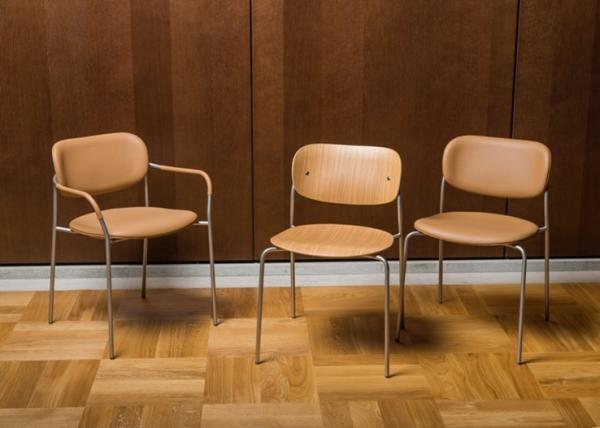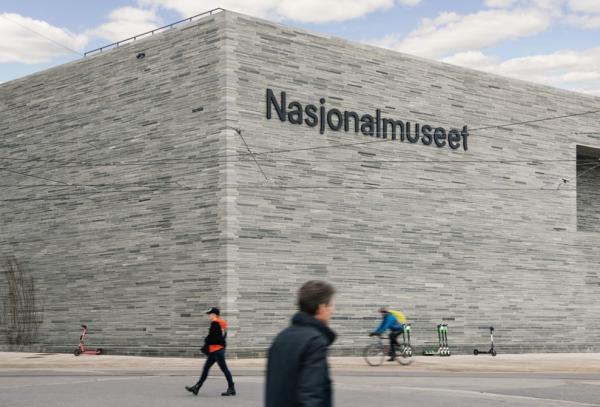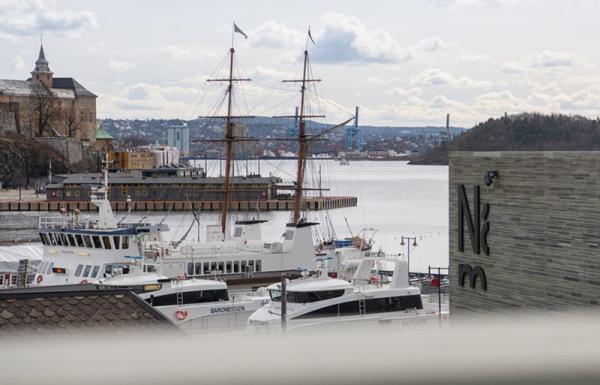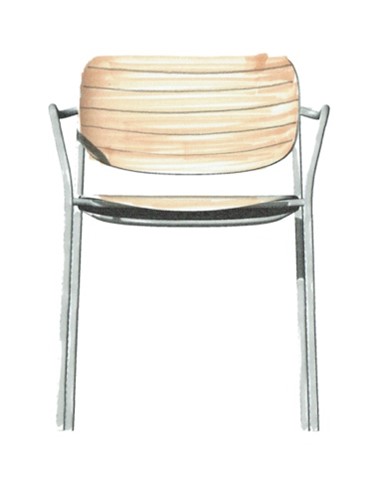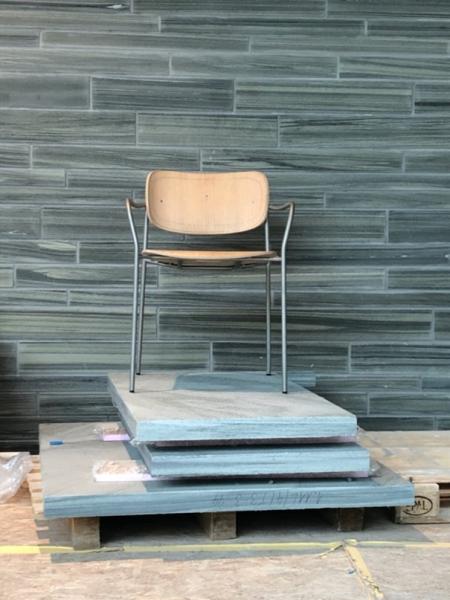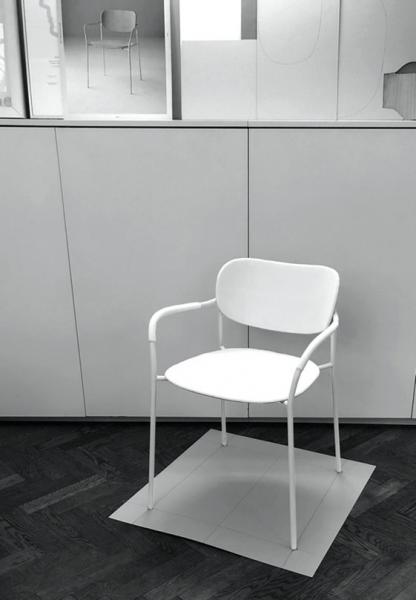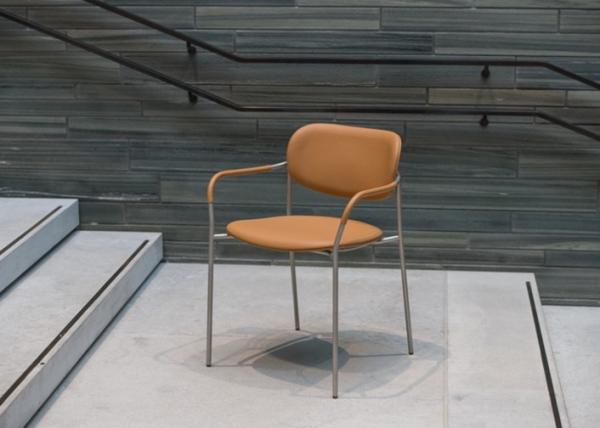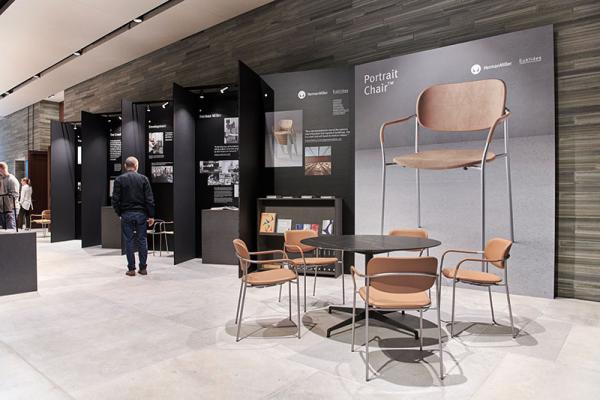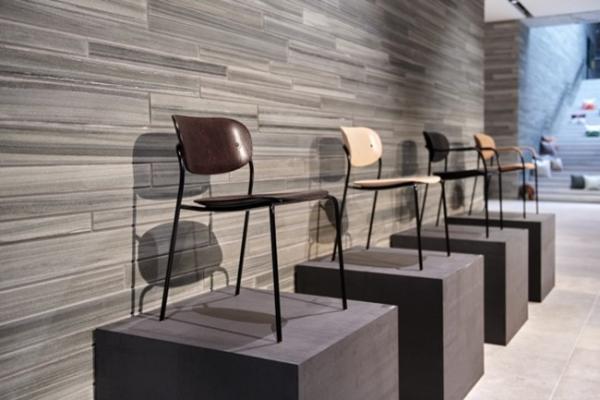Our Designs
In the same way a painted portrait aims to display the likeness, personality and even the mood of the subject, the Portrait Chair was designed to embody the essence of Norway.
Designed by Andreas Engesvik, the Portrait Chair was the winning design in a competition to find a new chair for the new National Museum in Oslo. Herman Miller, which was subsequently chosen as the manufacturer of the chair, believes Portrait will prove to be an iconic chair and that making it available on a larger scale will help elevate the importance of Norwegian design in contemporary furniture.
We spoke to Dr. Denise Hagströmer, Design Historian and Senior Curator of Design at the National Museum of Art, Architecture and Design in Oslo to learn more about this nationally significant chair.
An Interview with Dr. Denise Hagströmer, Design Historian and Senior Curator of Design at the National Museum of Art, Architecture and Design, Oslo, Norway.
1. Can you tell us a bit about your role at the National Museum?
My title is Senior Curator of Design. My area of concern includes all aspects of design: product, furniture, graphic and digital design from around 1900 to now. Since starting at the museum in 2013, I have updated and expanded the museum’s design collection as part of the preparations for the museum’s new collection display which opens in June 2022. We are very busy building and mounting the collection display! I am also co-curating a large-scale temporary exhibition, Scandinavian Design and the USA 1890-1980, a collaboration with Los Angeles County Museum of Art (LACMA), Milwaukee Art Museum and the National Museum in Stockholm, due to open at the Architecture Museum in Oslo (part of the National Museum) in March 2022.
I am half Swedish and half American. Before joining the museum, I completed a PhD at the Royal College of Art and Victoria and Albert Museum, London, about the relation between design, architecture and diplomacy, and had worked internationally for 25 years in design curation, education and writing about design.
2. What prompted the National Museum in Oslo to run a competition for a chair for their public spaces?
In the last couple of decades, Norwegian design has enjoyed increased international attention, and this was a golden opportunity for the museum to build on that by promoting contemporary Norwegian design. The Museum Chair Exhibition presented the proposals of all ten shortlisted designers from an open competition of originally 26 studios. The exhibition became what we had hoped for: a celebration of contemporary Norwegian furniture design culture. The Chair Competition also sought to convey that we are Norway’s national design museum, and as a museum, we also wished to strengthen our links with the nation’s design community.
3. How was the competition run?
The entire chair competition project is the result of a successful and fruitful collaboration between Statsbygg (The National Property Board) and the National Museum, with Hanne Faannessen Raunehaug (Statsbygg) as Project Manager. I was involved right from the very earliest stage of the project in early 2018. Initially I was the museum’s representative in the working group preparing the competition, and later I represented the museum as a member of the jury. I also co-curated the Museum Chair Competition Exhibition at the Mellomstasjonen centre, in autumn 2018. We were delighted that British designer Jasper Morrison, RDI, accepted our invitation to direct the jury’s work. His ‘from the outside’ perspective was invaluable to us. In addition, Morrison has had an ongoing relationship with Nordic design culture since the late 1980s, when he rediscovered Scandinavian Design – before the Scandinavians themselves. It needs mentioning that the competition was anonymous, in order to preclude bias. So not even the jury knew who were behind the ten submissions to the competition until the envelopes were opened on 6 November 2018, by Museum Director Karin Hindsbo and Statsbygg’s Administrative Director, Harald V. Nikolaisen. There was suspense until the last second!
4. The jury, led by British designer Jasper Morrison, described Portrait as “a beautiful chair that adds a seductive softness and elegance to the room where it will be used.” What was it about the Portrait Chair and Andreas’ design that made it a winner for you?
The Portrait chair is sophisticated, very well thought out and comfortable. The chair’s design takes its intended surroundings into consideration, and manifests a design historical lineage at the same time as being extremely contemporary. The distinctive design is original and innovative, and promises longevity.
5. You mention “The chair will become the chair of the whole nation, and an important contribution to the design identity of the new National Museum”. How do you envision this chair becoming an object of symbolic value for the building?
The chair is charged with symbolic meaning. It has an official identity, as it has, in effect, been commissioned by the nation: The National Museum and National Property Board (Statsbygg). The new ‘nation’s chair’ is at the same time a prominent addition to the museum’s new design identity. The chair will be present in the museum’s key public spaces. It will be the museum’s signature design object for contemporary Norwegian design culture. A chair is not just any kind of design object. It is an extremely complex item of design, in fact historically it has been irresistible to designers, particularly in the 20th century. And designing a chair for a specific building is exactly how many well-known chairs of today originated.
6. What was it that made Geiger/Herman Miller stand out as the winning manufacturer, to make the chair?
The open producer procurement procedure, conducted by Statsbygg (the National Property Board) concluded that Herman Miller’s century-long history and world repute stood out, as did HM’s acute understanding of the nature of this commission and the importance of the collaboration with Statsbygg, the National Museum and Andreas Engesvik. Further aspects that stood out include HM’s competence, capacity and attention to quality, research and development, as well as their technical and environmental management.
